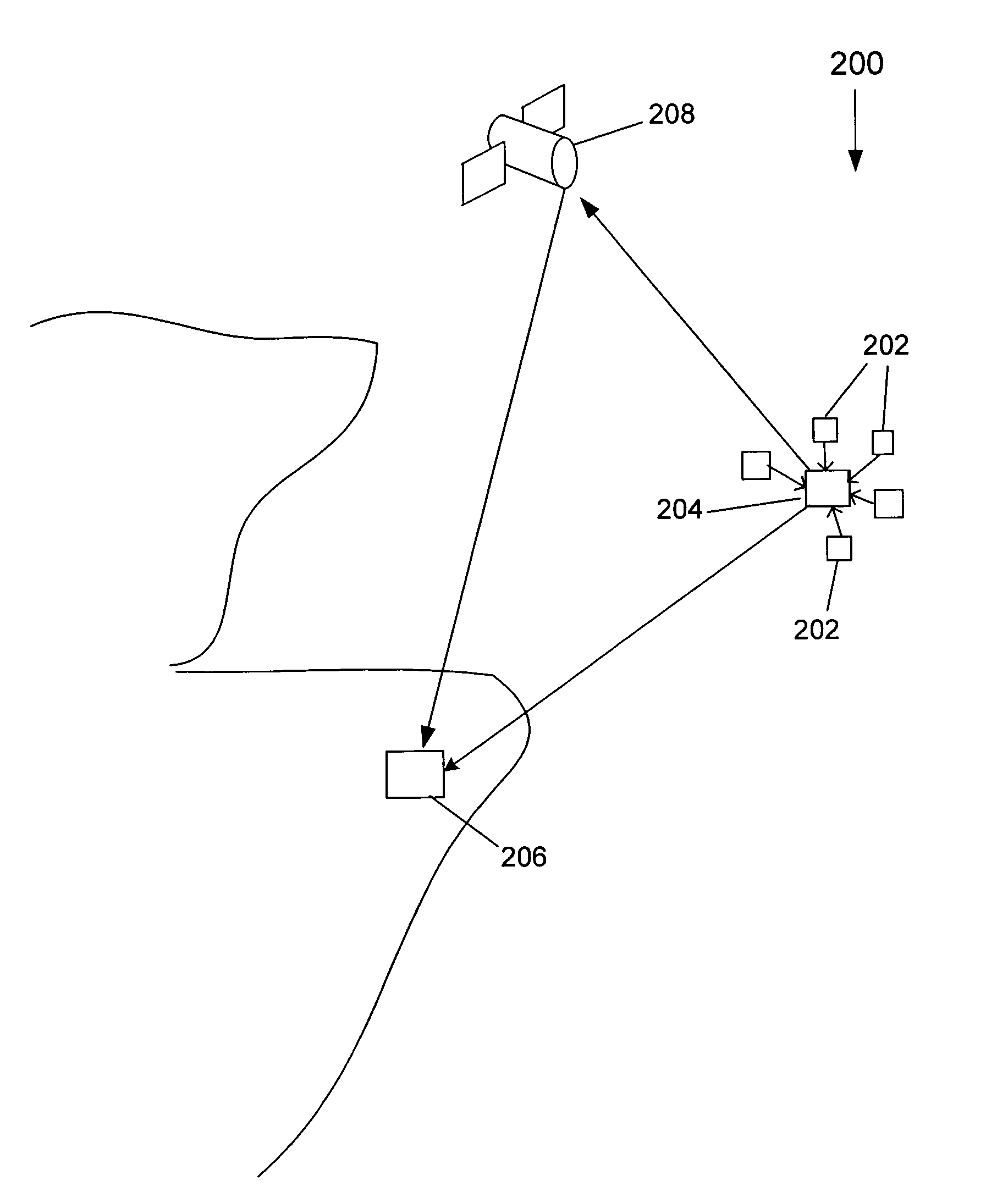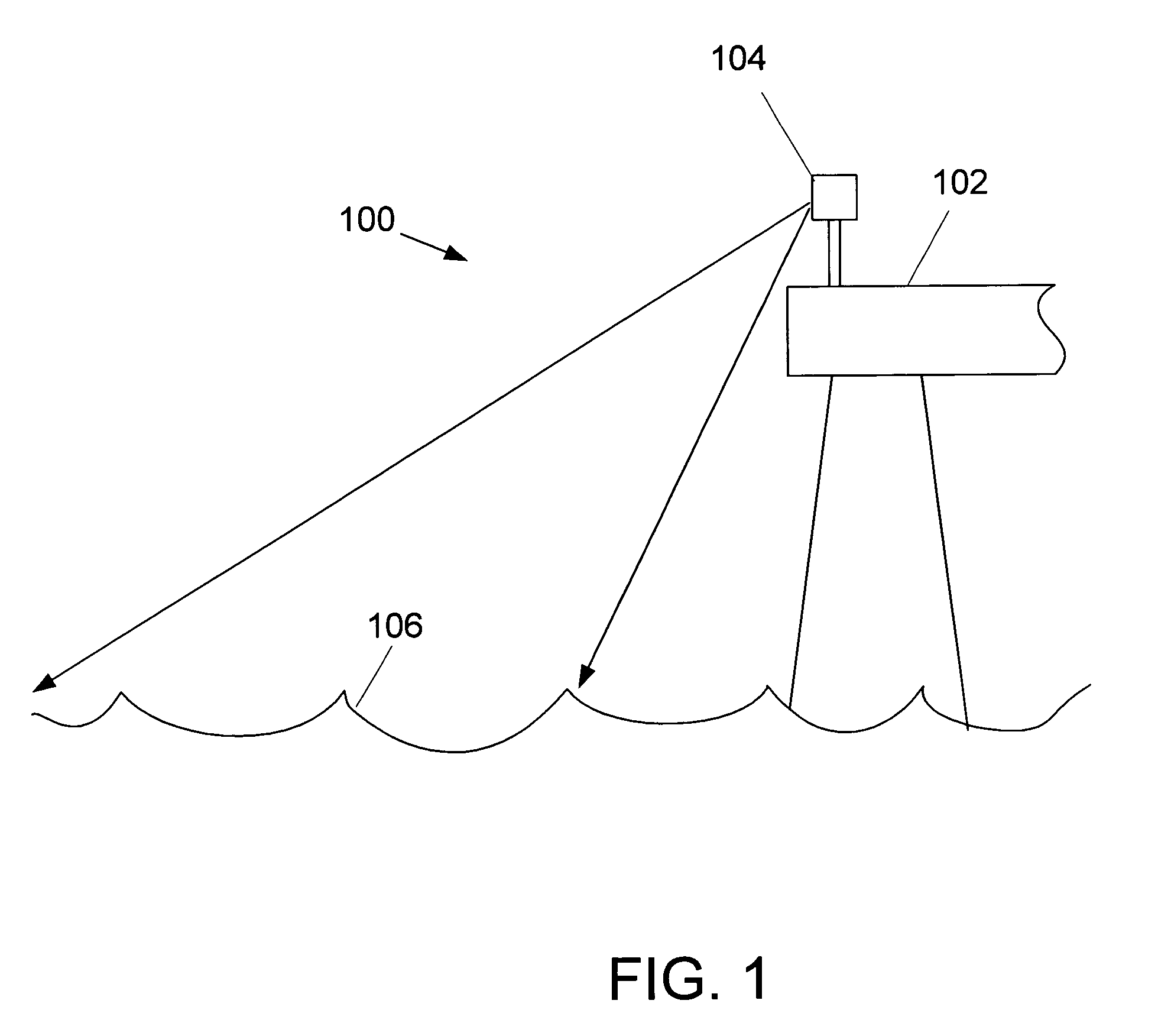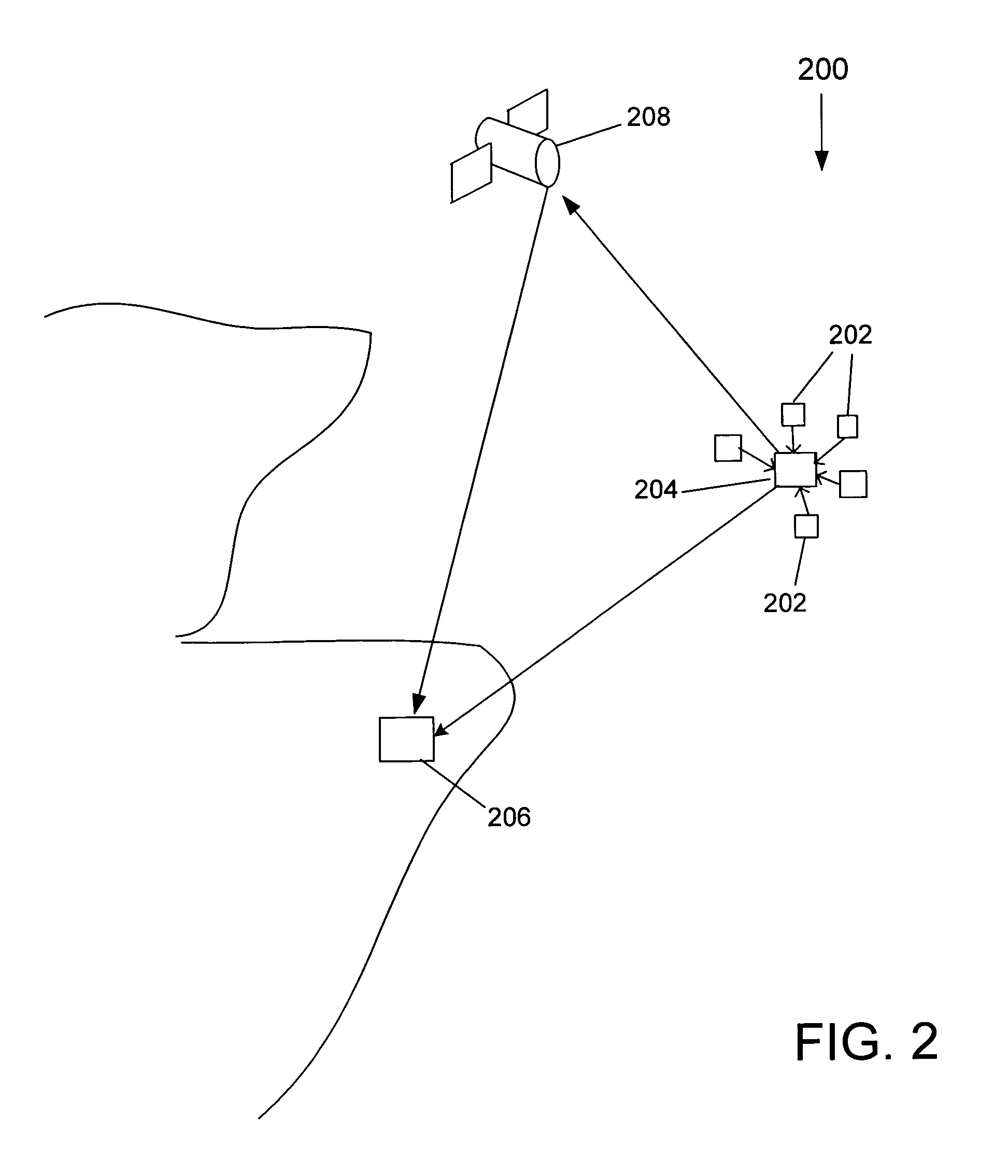Method and apparatus for monitoring and measuring oil spills
a technology for oil spills and methods, applied in direction finders, geological measurements, reradiation, etc., can solve the problems of large ecological problems, ineffective and expensive use of existing surveillance methods to achieve these goals, and inability to detect oil in marine environments. , to achieve the effect of increasing the output signal accuracy
- Summary
- Abstract
- Description
- Claims
- Application Information
AI Technical Summary
Benefits of technology
Problems solved by technology
Method used
Image
Examples
Embodiment Construction
[0027]In general, the present invention is directed to a system for detecting and monitoring an oil spill that may be used for detecting oil spills on a lake, sea or ocean.
[0028]One particular embodiment of an oil spill identification system 100 according to the present invention is schematically illustrated in FIG. 1. A structure 102, for example an offshore structure such as an oil platform (as illustrated), or an onshore structure near the lake, sea or ocean shore is used for permanently mounting an oil spill sensor unit 104. The illustration shows only part of the structure 102. The sensor unit 104 is mounted on the structure 102 in such a way as to permit the monitoring of a large area of the water surface 106. Accordingly, onshore structures near the sea may include, but are not limited to, onshore-based wind turbines, lighthouses, funnels and / or tall building structures such as warehouses or silos in a harbor. The mounting of the oil spill sensor unit 104 on a fixed structure...
PUM
 Login to View More
Login to View More Abstract
Description
Claims
Application Information
 Login to View More
Login to View More - R&D
- Intellectual Property
- Life Sciences
- Materials
- Tech Scout
- Unparalleled Data Quality
- Higher Quality Content
- 60% Fewer Hallucinations
Browse by: Latest US Patents, China's latest patents, Technical Efficacy Thesaurus, Application Domain, Technology Topic, Popular Technical Reports.
© 2025 PatSnap. All rights reserved.Legal|Privacy policy|Modern Slavery Act Transparency Statement|Sitemap|About US| Contact US: help@patsnap.com



